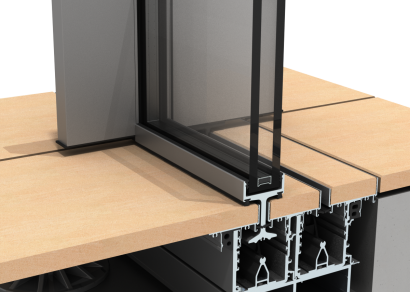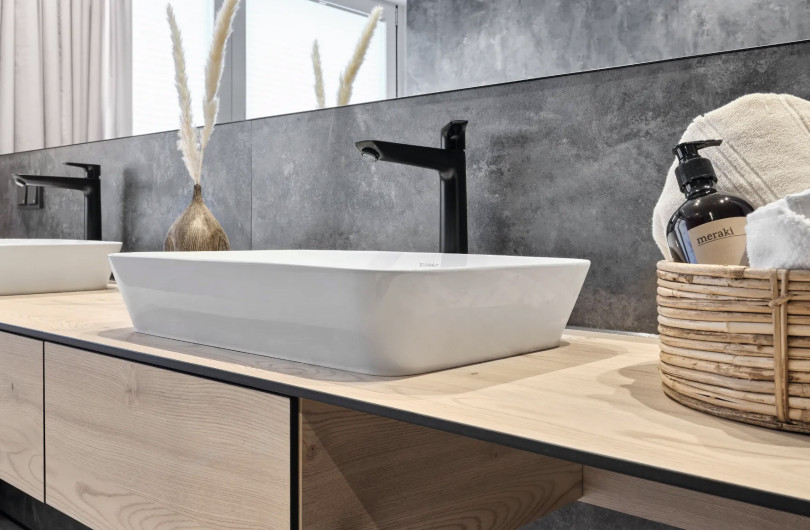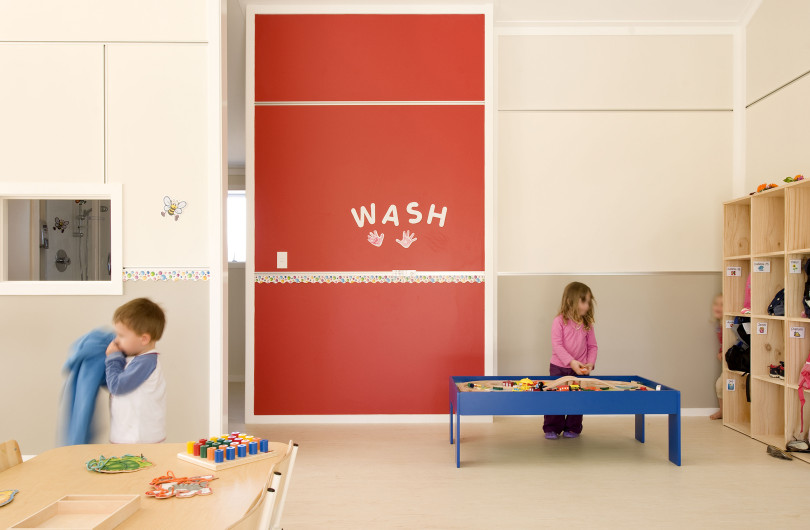I recently attended a Sustainability/Passive Design seminar where the audience was asked to name important features of Passive Design. One immediate response was to say that there must be substantial Thermal Mass in the house. The presenters didn't comment as they needed to move on, nor did anyone from the group question this or comment. I have often heard, and have had stated to me, that more Thermal Mass is necessary, and good because it heats the building. I have trouble with this view — I prefer to reply "it depends."
My first point is that Thermal Mass (as also Insulation), does not 'heat' the space it is in, it just slows the rate at which the space cools. To be clear, I'm not speaking of the 'heating phase' of a heated exposed concrete floor, or a night-storage unit, etc., be it by embedded electric wires, water pipes, or sunshine directly into the room containing the mass or onto the Thermal Mass surface, etc. I am rather referring to what happens after the heating source is removed.
If the Thermal Mass is not 'heating' the space, then why does one feel 'warmth' when exposed to the surface? The warmth comes from the heat energy being lost from the surface, and the warmth lasts for longer because there is a lot more energy to be transferred out of the mass than from a low thermal mass material. Think of a concrete path and an uninsulated corrugated iron open shed exposed to the sun all day. As the materials are absorbing the sun’s energy in the morning, the surface temperature of the concrete does not rise as fast because the energy is being 'stored' rather than being used to raise the surface temperature, resulting in the material with the higher thermal mass feeling cooler for longer. As soon as the sun goes down, the temperature of the iron drops to that of the surrounding air, but the concrete path stays warmer than the surrounding air until well into the evening.
The 'speed' of the cooling, or the length of time during which the surface feels 'warm' depends primarily on the rate at which the thermal energy is lost, and the amount of energy available to be lost (factors specific to the thermal mass material). The 'speed' also depends upon the temperature difference between the thermal mass and the air in the room. As the difference reduces, there is a slowing of the heat energy transfer — think of a cooling cup of tea or coffee.
From this physical behaviour it can be seen that all materials have a thermal mass, even the fabric of a tent, but for normal practical purposes Thermal Mass in buildings refers to 'heavy' materials such as concrete and brick. While these materials are slow to give up their thermal energy, they are also slow to absorb the energy, hence the 'evening-out' or moderating of temperature extremes over a hot/cold cycle.
When Thermal Mass is introduced into the design of a building so as to slow the cooling of the spaces during cold periods, it needs to be recognized that there is a down-side; slow to cool = slow to heat. This means that on a cold morning the Thermal Mass will soak up the thermal energy inputs from the heater instead of the heater raising the temperature in the room. If the occupants of a house have all departed within an hour or two of waking up then they are better to have a low thermal mass breakfast space so that the temperature rises quickly, and use insulation to retain the heated air. On the other hand, if the house is continually occupied during the day then careful thermal mass design will give better comfort control, be it winter or summer.
In my opinion, before Thermal Mass is added to a house design so as to improve the Passive Energy performance, consideration must be given to how the occupants are to use the spaces, but this has problems because weekday use is quite different to the two days of the weekend. Also, the quantity of mass constructed must be thought of. The more mass there is, the more time it takes before the temperature rises to an optimum level, but with less mass, the quicker the temperature drops when the occupied space is in cooling mode.
The other primary reason why Thermal Mass is not the magic answer is that if it is incorrectly located it will soak-up expensive network energy without any passive gain to the building. Think of the ceramic tiled concrete floor to the south facing en-suite which requires the space to be heated from network energy sources, and even then the floor may not reach a comfortable temperature until well after ablutions are complete. There was a good reason why now unfashionable cork tiles were used for these floors in the past.
If Thermal Mass is to be included as a passive energy feature, then it needs to be installed in a manner and location which enables it to absorb passive energy. There are no simple rule-of-thumbs to give a good result, especially when its use must be coordinated with glazing and insulation, as I have written about in earlier blog posts. The thermal simulation analysis I undertake integrates the big three inter-dependent variables — thermal mass, glazing and insulation — so as to give an objective measure of the performance of possible passive design options for comparison purposes.



























 Most Popular
Most Popular Popular Products
Popular Products



